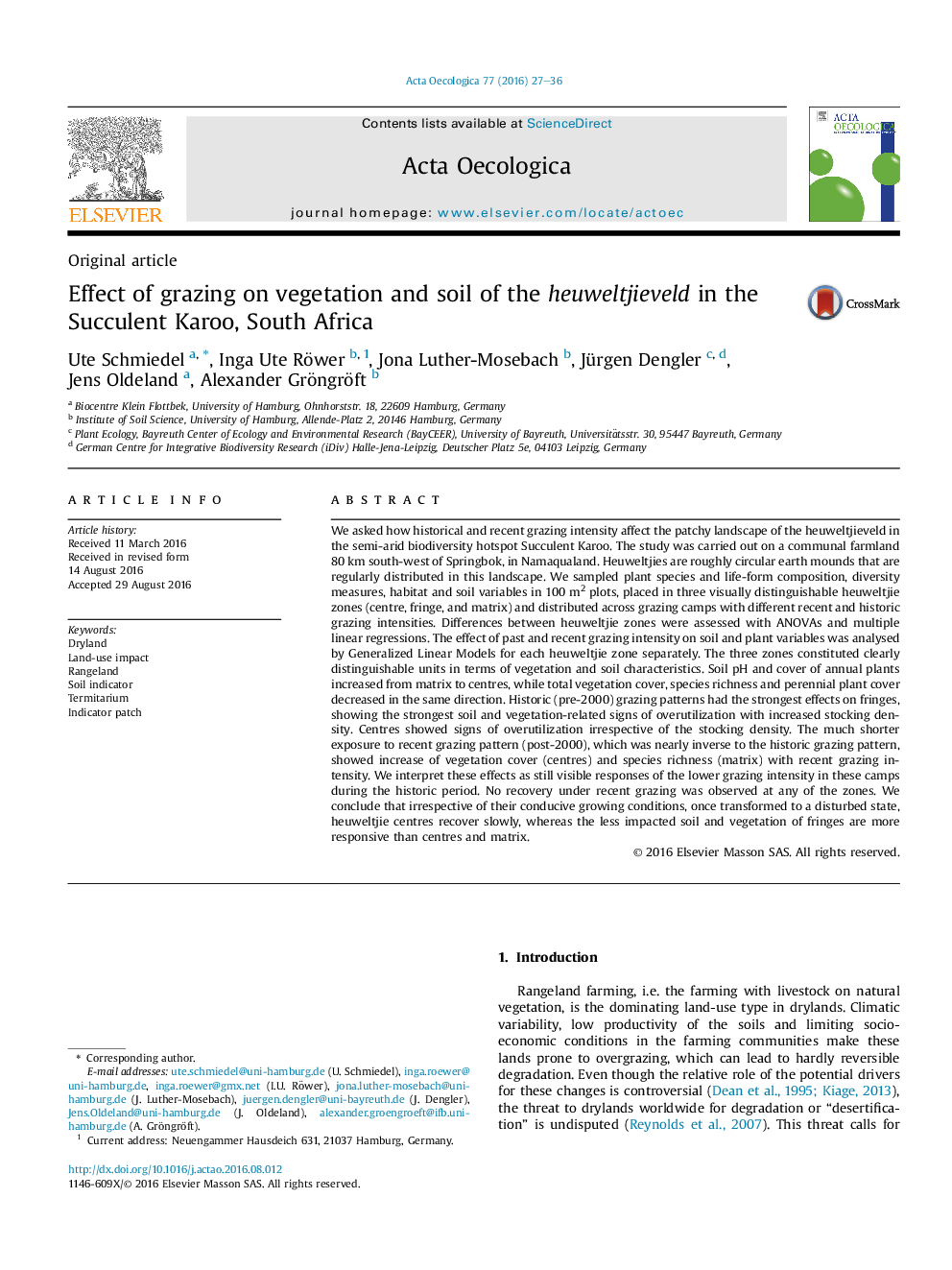| Article ID | Journal | Published Year | Pages | File Type |
|---|---|---|---|---|
| 4380594 | Acta Oecologica | 2016 | 10 Pages |
Abstract
We asked how historical and recent grazing intensity affect the patchy landscape of the heuweltjieveld in the semi-arid biodiversity hotspot Succulent Karoo. The study was carried out on a communal farmland 80Â km south-west of Springbok, in Namaqualand. Heuweltjies are roughly circular earth mounds that are regularly distributed in this landscape. We sampled plant species and life-form composition, diversity measures, habitat and soil variables in 100Â m2 plots, placed in three visually distinguishable heuweltjie zones (centre, fringe, and matrix) and distributed across grazing camps with different recent and historic grazing intensities. Differences between heuweltjie zones were assessed with ANOVAs and multiple linear regressions. The effect of past and recent grazing intensity on soil and plant variables was analysed by Generalized Linear Models for each heuweltjie zone separately. The three zones constituted clearly distinguishable units in terms of vegetation and soil characteristics. Soil pH and cover of annual plants increased from matrix to centres, while total vegetation cover, species richness and perennial plant cover decreased in the same direction. Historic (pre-2000) grazing patterns had the strongest effects on fringes, showing the strongest soil and vegetation-related signs of overutilization with increased stocking density. Centres showed signs of overutilization irrespective of the stocking density. The much shorter exposure to recent grazing pattern (post-2000), which was nearly inverse to the historic grazing pattern, showed increase of vegetation cover (centres) and species richness (matrix) with recent grazing intensity. We interpret these effects as still visible responses of the lower grazing intensity in these camps during the historic period. No recovery under recent grazing was observed at any of the zones. We conclude that irrespective of their conducive growing conditions, once transformed to a disturbed state, heuweltjie centres recover slowly, whereas the less impacted soil and vegetation of fringes are more responsive than centres and matrix.
Keywords
Related Topics
Life Sciences
Agricultural and Biological Sciences
Ecology, Evolution, Behavior and Systematics
Authors
Ute Schmiedel, Inga Ute Röwer, Jona Luther-Mosebach, Jürgen Dengler, Jens Oldeland, Alexander Gröngröft,
